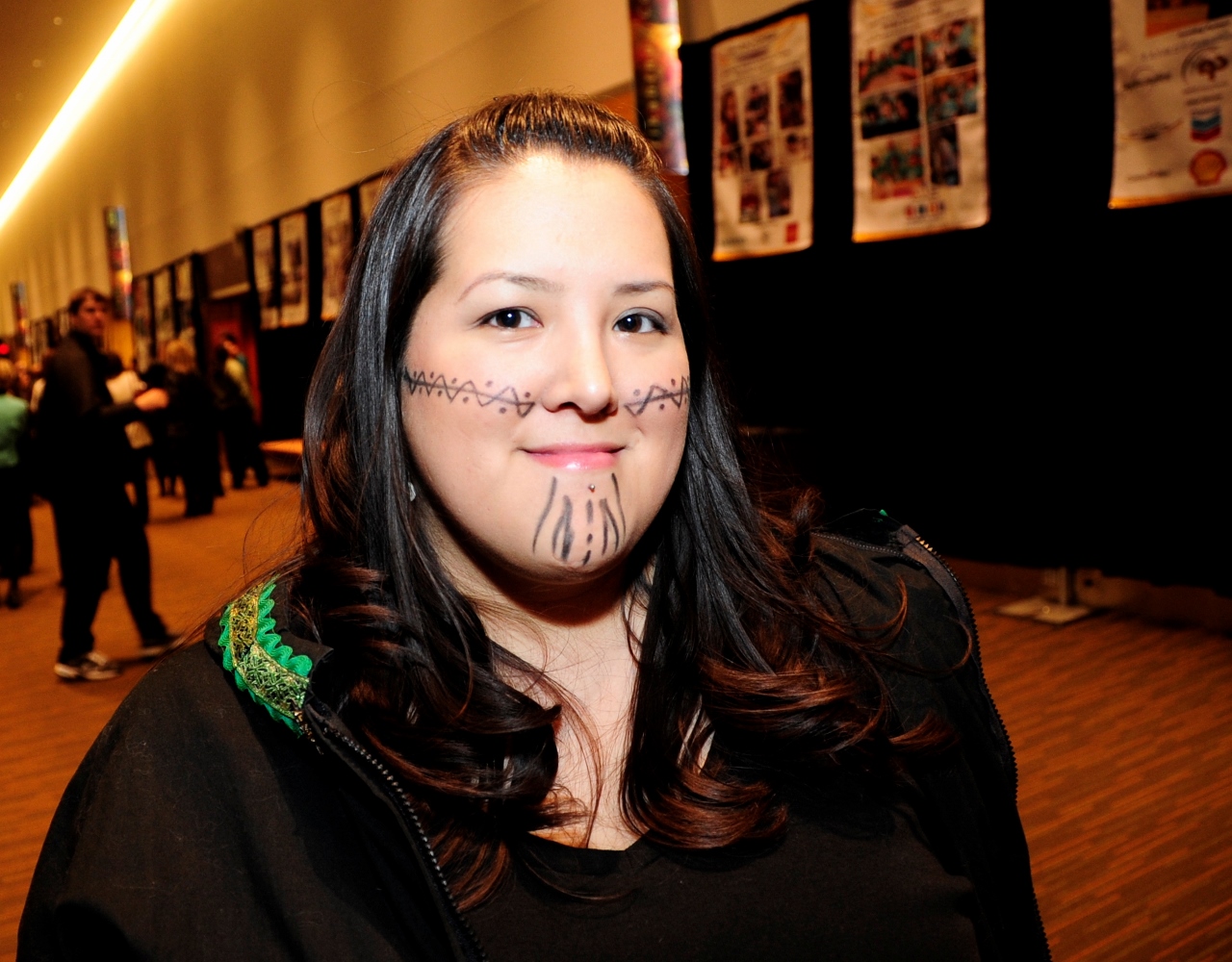Michele Yatchmeneff: Honoring Alaska Native students
The Alaska Native was a migrant student. Her family lived in Anchorage during the school year, but returned to their home village in the Aleutian Islands for the summer harvest. She says there is a great difference between the school systems throughout the state.
 Michele Yatchmeneff celebrating at the ANSEP Banquet with traditional Unangax facial tattoos (photo provided).
Michele Yatchmeneff celebrating at the ANSEP Banquet with traditional Unangax facial tattoos (photo provided).“There are very small rural villages that maybe have one or two graduates a year from high school,” Michele explains. “There’s one teacher (per several grades) and they usually don’t have a background in science or math, so they’re just doing the basics.”
However, in Alaska’s bigger communities – Anchorage, Fairbanks and Juneau – there are multiple options for students. Those include private academies, public and parochial schools, and career and technical education. Michele graduated from a public school and enrolled in the University of Alaska-Anchorage (UAA) where she studied engineering. She benefited from the Alaska Native Science and Engineering Program (ANSEP), which serves the university system. Undergraduate students in ANSEP are required to attend weekly team-building meetings, recitation study sessions, complete an internship and make successful progress toward a degree in return for an annual $5,000 scholarship. The program’s objectives are to inspire, recruit and guide Alaskan Native students to become scientists and engineers.
“Alaska has a lot of natural resources currently being managed by outsiders,” she says, “being managed not with native people’s interests at heart. So that’s our goal – native people beginning to manage the resources there.”
After receiving her bachelor’s degree in civil engineering, Michele worked on water/wastewater projects in Alaska, specifically in native communities. However, it was not long before ANSEP reached out to her about returning to campus.
“I went back to work for them in 2007 and during that time I was getting my master’s degree in engineering management,” she says, “working mainly at the university and helping retain college students.”
From retention efforts to managing scholarships, Michele worked on many facets of ANSEP. She eventually became deputy director and was helping manage the pre-college programming. That involved high school students taking college-level math and science courses on campus during the summer to help students in smaller schools bridge the achievement gap.
“It’s a very large operation with only a few of us managing it,” Michele says. “We have more than 1,000 students in our pipeline from middle school to Ph.D.”
She is one of those students. With Michele’s passion for her engineering students it is a natural path for her to study Engineering Education at Purdue University. Michele left her job with ANSEP in August 2013, so she could accept a fellowship that allows her to complete her studies at Purdue. However, she still helps with ANSEP projects. While her responsibilities have eased up, Michele works with sponsors to make sure requirements are met and students are meeting expectations. Most recently, she attended the annual banquet held at the end of January, which featured former astronaut Jim Lovell. She also spoke to the students and honored those who are graduating.
 Jim Lovell, former NASA astronaut, was the keynote speaker at the 2014 ANSEP Banquet. Michele calls his visit "inspirational" for the students. (Courtesy Philip Hall/University of Alaska-Anchorage)
Jim Lovell, former NASA astronaut, was the keynote speaker at the 2014 ANSEP Banquet. Michele calls his visit "inspirational" for the students. (Courtesy Philip Hall/University of Alaska-Anchorage)“I still consider them all my students, even though I’m not there,” Michele says. “I’ve either taught them engineering or I’ve led some component they were involved in, so they get all excited when I’m there.”
Current middle and high school students may have the opportunity to learn from Michele as well. Upon completing her Ph.D., she plans on returning to UAA in a faculty role.
“I have a year to prove myself and that year counts as time served, and then I have a full contract.”
Ideally, Michele wants to teach the introductory civil engineering course, but hopes to help the professors too. The School of Engineering Education’s doctoral program prepares future engineering faculty and industry leaders to use research-based teaching methods and multi-disciplinary curriculum.
“I’m excited about, hopefully, being an asset on the campus as far as the other engineering teachers,” Michele says. “Possibly hosting some workshops or seminars. Asking them if they can incorporate more lab work, more active learning.”
But most important to her is putting into practice what she has learned at Purdue to help figure out “how to do everything better.” That includes improving the already high success rate of ANSEP students, who will become the next generation of engineers.
